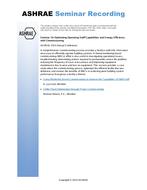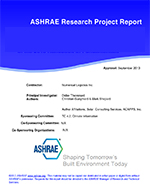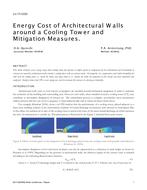Quantitative information on the performance of building envelope components as a function of time is seriously lacking. Designing for the durability and service life of building systems has not reached a stage of maturity as many key issues have not yet been analyzed.
Total performance in terms of designed life-span durability requires the integration of various performances that deal with hygrothermal transport, structural loading, and chemical and biological activities. To date, limited work is available that encompasses this spectrum of multidisciplinary activity. This paper presents a new durability model as the first step toward the development of an analytical tool to assist in the design attributes/considerations of hygrothermoelasto-plasticity of building wall assemblies. The development of an uncoupled quasi-static hygrothermoelasticity model for two-dimensional composite building envelope systems is discussed.
The boundary element method, using boundary integral equations for two-dimensional elastic displacements and stresses, is briefly presented. Domain integrals related to hygrothermal body forces were converted to equivalent boundary integrals using the dual reciprocity technique. Together with other innovative techniques, such as analytical evaluations of all the boundary integrals, makes this procedure powerful, robust, and easy to extend to fully nonlinear hygrothermoelasto-plastic.
To demonstrate the capability of this model for durability analysis, an application case is presented for a building wall assembly. An English bond masonry wall system, exposed to actual weather, heat, air, and moisture transport boundary conditions for the city of Ottawa, is analyzed. Hygrothermal-elastic numerical results show that high magnitudes of shearing stress are concentrated in the mortar layer, which is consistent with empirical knowledge on the deterioration of masonry walls. In addition, the direct coupling effects of weather and the hygrothermal response of the wall system on the structural behavior is clearly identified during periods of wind-driven rain.
Units: SI
Citation: Symposium, ASHRAE Transactions, 1998, Vol. 104, Part 2, Toronto, ON
Product Details
- Published:
- 1998
- Number of Pages:
- 11
- File Size:
- 1 file , 630 KB
- Product Code(s):
- D-7732


